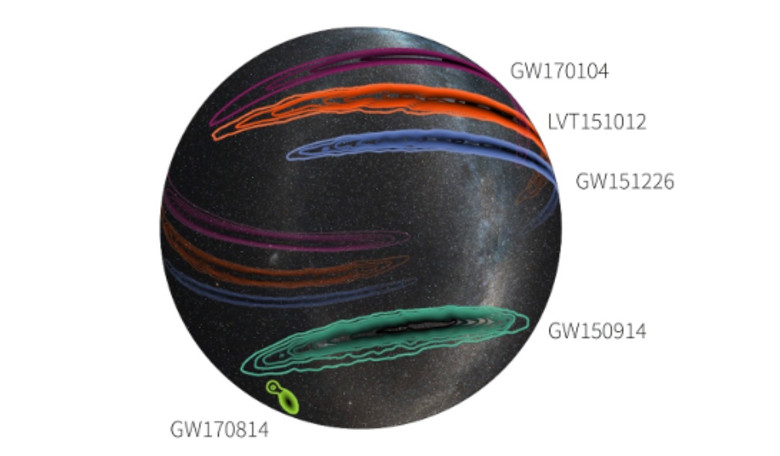Using a network of three interferometers instead of two, the LIGO team and the Virgo Collaboration jointly report that a fourth confirmed detection of a binary black hole merger has been recorded. It is the first time that both scientific collaborations have worked together to pin down a gravitational-wave signal.
When it comes to searching for black hole mergers, while two is company and three is a crowd for some, the same does not apply for gravitational wave detectors.
The Virgo detector works on a similar basis to its counterparts in America; it has two ‘arms’ that are three kilometres long (compared with two, 4 km long arms for the LIGO interferometers) and both are L-shaped (though not all interferometers are this shape). As such, both have mirrors at the ends of the arms to reflect light in order to combine light beams and create an interference pattern.
The advantage of combining detectors is that scientists can confine the direction of the gravitational wave signal to a smaller search area on the sky. The first reported signal, GW150914, for example was resolved to an area of approximately 600 square degrees.
The sky region for this latest event, known as GW170814, has a size of only 60 square degrees – more than 10 times smaller than with data from the two LIGO interferometers alone.
“This is just the beginning of observations with the network enabled by Virgo and LIGO working together,” says David Shoemaker of MIT, LSC spokesperson. “With the next observing run planned for Fall 2018 we can expect such detections weekly or even more often.”
Analysis of the signal from GW170814 confirms that the merger of the two black holes in question had masses about 25 and 31 times the mass of the sun and are located about 1.8 billion light-years away. The resulting merged, single behemoth black hole will be about 53 times the mass of our sun. The discrepancy in the masses means that about 3 solar masses of material were converted into gravitational-wave energy as the two combined.
“Little more than a year and a half ago, NSF announced that its Laser Gravitational-Wave Observatory had made the first-ever detection of gravitational waves resulting from the collision of two black holes in a galaxy a billion light-years away," says France Córdova, NSF director. “We are [now] delighted to announce the first discovery made in partnership between the Virgo Gravitational-Wave Observatory and the LIGO Scientific Collaboration, the first time a gravitational-wave detection was observed by these observatories, located thousands of miles apart. This is an exciting milestone in the growing international scientific effort to unlock the extraordinary mysteries of our Universe.”











